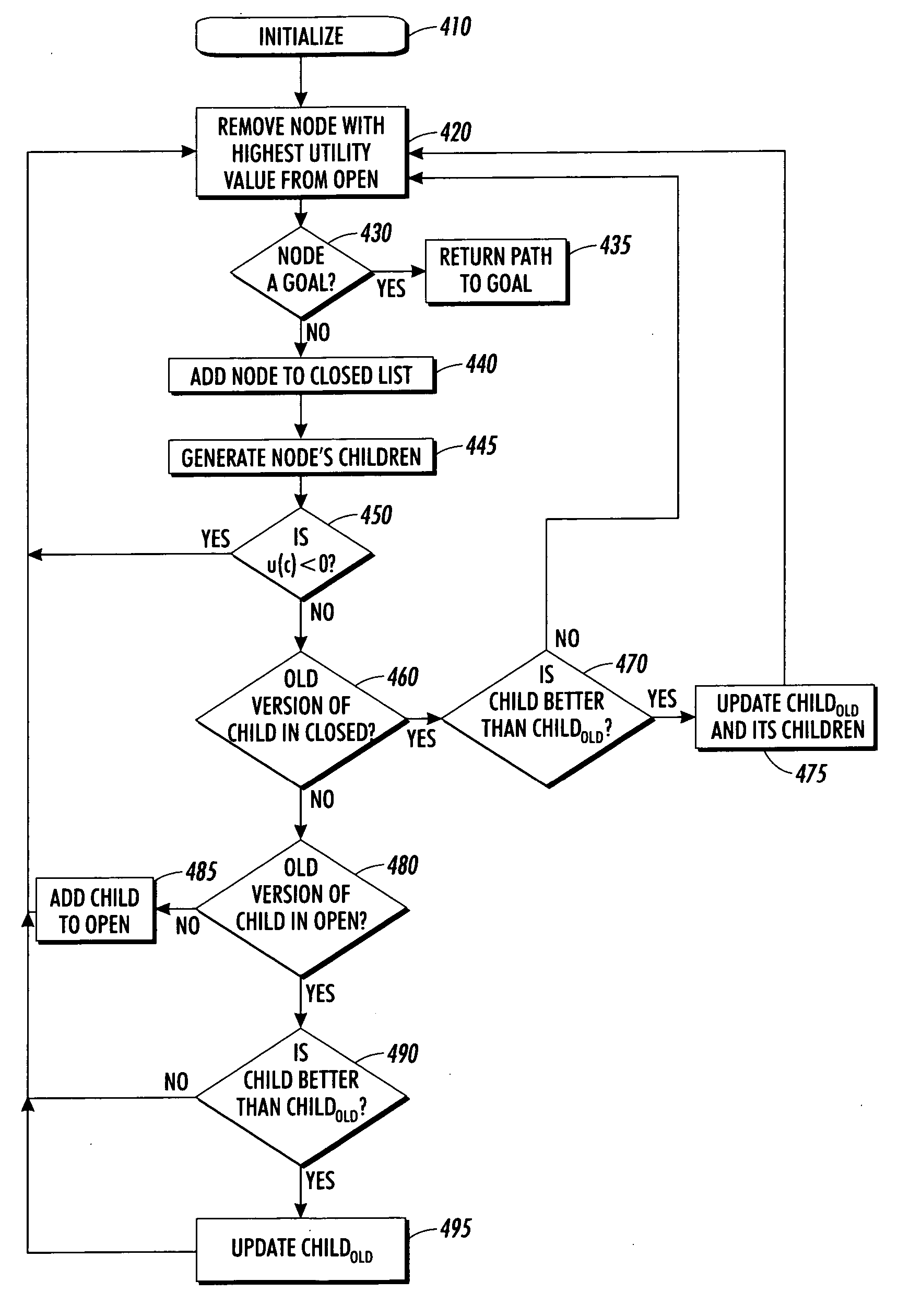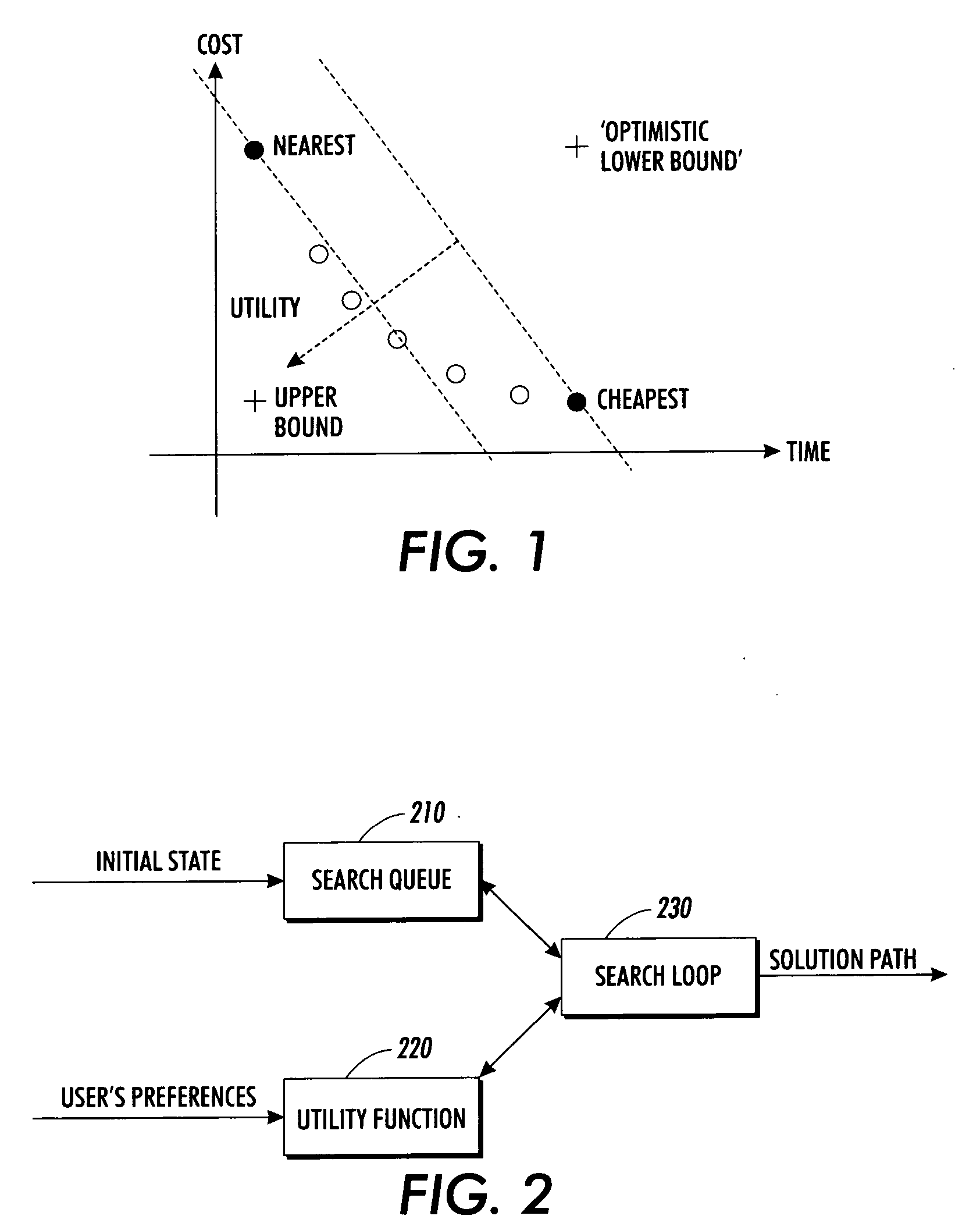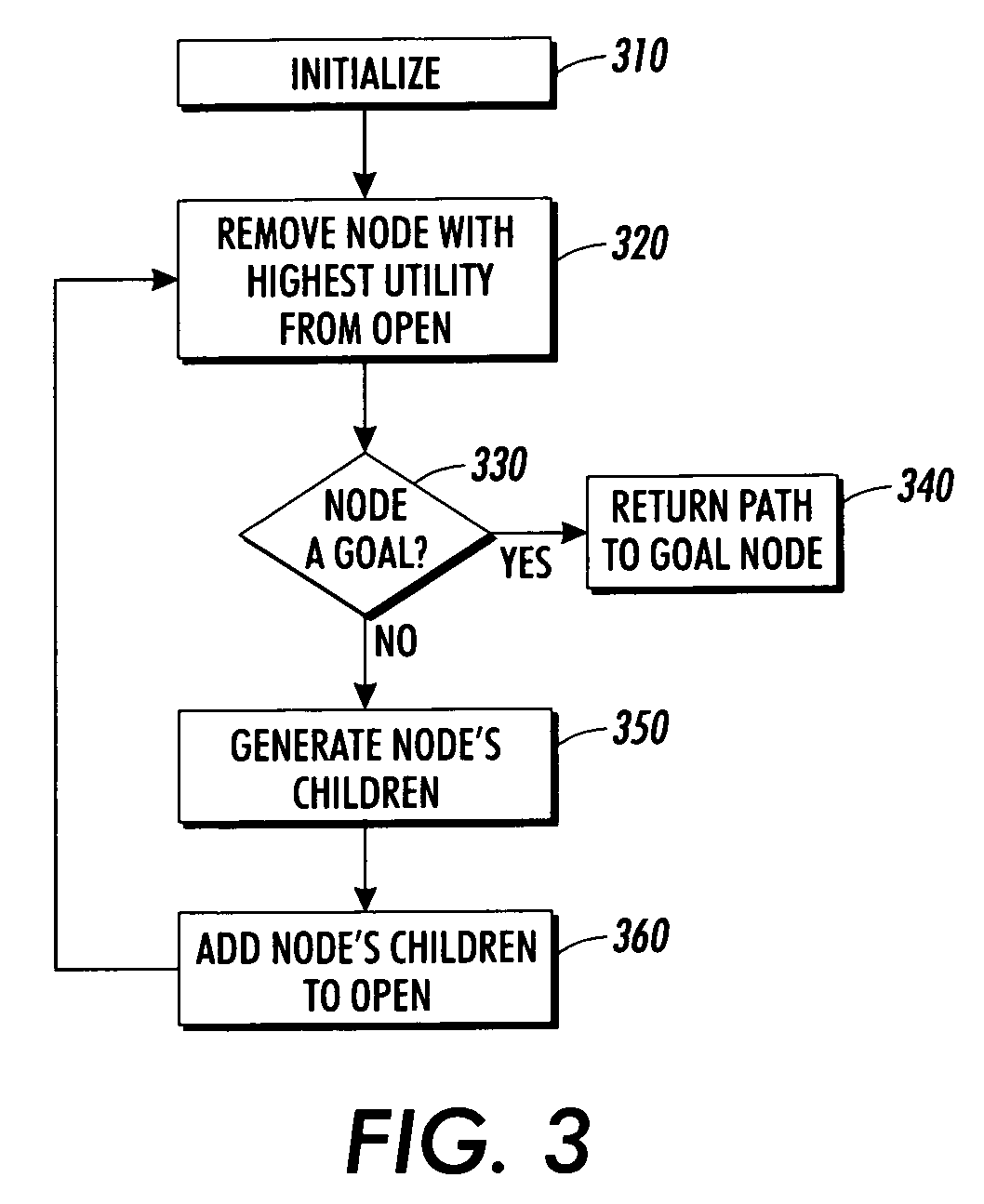System and method for time-aware path finding
a time-aware and path-finding technology, applied in the direction of dynamic trees, instruments, computing models, etc., can solve the problems of not desirable, or even feasible, to look for the least-cost path, and the time-consuming and labor-intensive to find the optimal solution this way,
- Summary
- Abstract
- Description
- Claims
- Application Information
AI Technical Summary
Benefits of technology
Problems solved by technology
Method used
Image
Examples
Embodiment Construction
[0020] Disclosed herein are a method and system that identifies solutions for such problems as planning, parsing, and sequence alignment. The method and system employ a combinatorial search, or a “state-space” search, which solves a problem by maintaining a list of partial solutions, each of which is called a node. Each node contains information about the current state of problem solving in that partial solution. How this list of nodes / states is maintained and how it is decided which one to work on next defines the operation of each particular algorithm. A node is worked on or “expanded” by generating all possible “child” nodes representing the different ways of continuing to fill in the partial solution.
[0021] The method considers the problem as finding the shortest path between an initial state and a goal state in a large graph and performs solution evaluation utilizing computation time balanced against solution quality. In this approach, rather than solely using a lower bound on...
PUM
 Login to View More
Login to View More Abstract
Description
Claims
Application Information
 Login to View More
Login to View More - R&D
- Intellectual Property
- Life Sciences
- Materials
- Tech Scout
- Unparalleled Data Quality
- Higher Quality Content
- 60% Fewer Hallucinations
Browse by: Latest US Patents, China's latest patents, Technical Efficacy Thesaurus, Application Domain, Technology Topic, Popular Technical Reports.
© 2025 PatSnap. All rights reserved.Legal|Privacy policy|Modern Slavery Act Transparency Statement|Sitemap|About US| Contact US: help@patsnap.com



